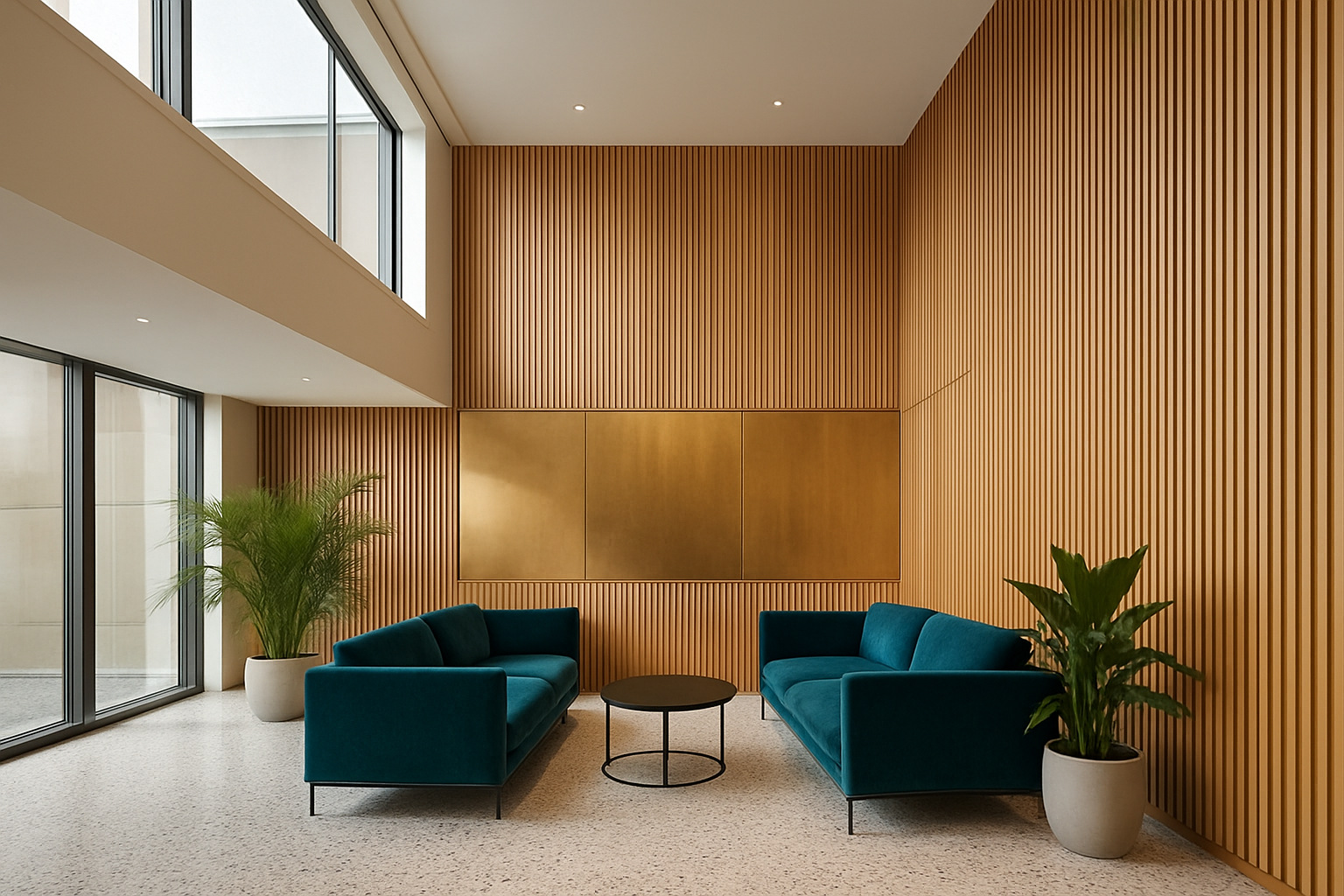Translating a design vision into a tangible reality is the core challenge for every interior designer and architect. Blueprints, mood boards, and material samples can only go so far in conveying the feeling and function of a space. This is where 3D interior rendering transforms the design process, turning abstract concepts into compelling, photorealistic visuals that everyone can understand. It bridges the gap between imagination and execution, ensuring that the final built environment perfectly matches the intended design. By leveraging advanced visualization techniques, design professionals can validate their ideas, accelerate client approvals, and de-risk projects before a single wall is painted or piece of furniture is ordered.
Core Techniques for Photorealistic 3D Interior Rendering
Achieving lifelike digital images requires a mastery of several fundamental techniques. Each plays a critical role in building a scene that is not just accurate, but also emotionally resonant.
Lighting and Realism
- Ray Tracing and Global Illumination (GI): These are the cornerstones of photorealistic visuals. Ray tracing simulates how individual light rays bounce off surfaces, creating accurate reflections, refractions, and shadows. Global Illumination builds on this by calculating how light scatters indirectly, illuminating areas not in direct light. This combination produces the soft, nuanced lighting we see in the real world.
- HDRI Lighting: High-Dynamic Range Imaging (HDRI) uses panoramic photos to light a 3D scene. This technique captures the complex lighting information of a real environment, providing naturalistic reflections and ambient light that ground the rendering in reality.
- Physically-Based Rendering (PBR): PBR materials are a game-changer. Instead of artists faking how a material looks, PBR uses real-world values for properties like roughness, metallicness, and reflectivity. This ensures that wood looks like wood and metal shines like metal under any lighting condition.
Composition and Detail
- Modeling and CAD/BIM Integration: The foundation of any rendering is an accurate 3D model. We can create models from scratch or, more efficiently, import them directly from CAD and BIM software like AutoCAD, Revit, or ArchiCAD. This ensures that the rendered space is dimensionally precise and true to the architectural plans.
- Texture Mapping and UVs: A model is just a gray shape until textures are applied. Texture mapping involves “wrapping” 2D images (textures) onto 3D objects. UV mapping is the process of creating a flat template of the 3D model to ensure these textures are applied without stretching or distortion, which is crucial for details like wood grain or fabric patterns.
- Asset Libraries and Kitbashing: To populate scenes efficiently, studios use vast libraries of pre-made, high-quality 3D assets—from furniture and light fixtures to plants and decor. “Kitbashing” is the art of combining and modifying these assets to create unique, custom arrangements that fit the design narrative.
- Camera Composition and Scene Layering: A great rendering is also great photography. We apply principles of composition, such as the rule of thirds, leading lines, and depth of field, to create visually appealing images. Using scene layering, or AOVs (Arbitrary Output Variables), allows for individual elements like lighting, shadows, and reflections to be isolated and fine-tuned separately during post-production.
- Post-Production: The final 10% of the work happens in software like Photoshop. Here, we perform color correction, adjust contrast, and add subtle effects like lens flares or atmospheric haze to enhance the mood and realism of the final image.
Emerging Methods Shaping the Future of Visualization
The field of 3D rendering is constantly evolving. New technologies are making the process faster, more immersive, and more intelligent.
- AI Denoising and Super-Resolution: AI-powered denoisers dramatically reduce render times by cleaning up the “noise” or graininess in partially rendered images. Neural upscaling, or super-resolution, uses AI to increase image size without losing detail, enabling the creation of massive, high-resolution prints from faster, smaller renders.
- Procedural Materials and Parametric Assets: Instead of using static image textures, procedural materials are generated by algorithms. This allows for infinite variations and resolutions, perfect for creating complex, non-repeating surfaces like marble or worn concrete. Parametric assets are models that can be easily changed using simple sliders—adjusting a table’s length or a chair’s leg style without remodeling.
- VR/AR Walkthroughs: Virtual and Augmented Reality are transforming client presentations. VR/AR walkthroughs allow stakeholders to step inside the design and experience the scale, flow, and ambiance of a space firsthand. This immersive perspective provides an unparalleled understanding of the project.
- Interactive Configurators: Often deployed on the web, interactive configurators let users change materials, colors, and furniture in real time. This is a powerful tool for projects like multi-family developments or hospitality chains, allowing clients or buyers to customize their own space.
- Cloud Rendering Pipelines: Rendering complex, high-resolution images requires immense computational power. Cloud rendering offloads this intensive task to a network of powerful servers, freeing up local workstations and enabling studios to process multiple projects simultaneously, leading to faster turnarounds.
The Business Benefits of 3D Rendering for Interior Projects
High-quality 3D rendering is more than just a presentation tool; it’s a strategic asset that delivers tangible business value throughout the project lifecycle.
- Faster Design Approvals: Photorealistic visuals make the design intent clear and compelling, eliminating ambiguity and helping clients make confident decisions more quickly.
- Reduced Rework and Change Orders: By identifying potential issues with scale, layout, or material combinations in the digital phase, you can avoid costly changes during construction.
- Improved Design Alignment and Stakeholder Buy-In: A single, realistic image serves as a “source of truth” that aligns the client, designer, architect, and contractor around a shared vision.
- Predictable Costs and Timelines: When design decisions are finalized and validated early, budgeting becomes more accurate and the risk of project delays decreases significantly.
- Powerful Marketing and Sales Enablement: Stunning visuals are invaluable for marketing brochures, websites, social media, and pre-leasing or pre-sale campaigns, allowing you to secure commitments before the project is built.
- Enhanced Cross-Team Collaboration: 3D models and renderings provide a common visual language for all project teams, from lighting consultants to MEP engineers, improving coordination and reducing conflicts.
- Sustainability Insights: Advanced renderings can simulate natural daylighting throughout the day and year, helping designers optimize for energy efficiency and occupant well-being.
Case Example: A Commercial Lobby Redefined
A corporate client wanted to renovate their dated lobby into a modern, welcoming space but struggled to envision the proposed changes. The design firm provided us with their initial floor plans and a mood board. Our team modeled the space in 3D, applying PBR materials for the specified terrazzo flooring, slatted oak walls, and brass fixtures. Using HDRI lighting matched to the building’s location, we produced a series of photorealistic visuals from key viewpoints.
The client was immediately able to see the impact of the double-height ceiling and the interplay of light and texture. They requested one minor change—swapping a proposed leather sofa for a velvet one. We updated the material and re-rendered the view in hours. The visuals were then used to get immediate buy-in from the executive board, and the approved images guided the general contractor, ensuring a flawless execution that perfectly matched the digital vision.
Choosing the Right 3D Visualization Partner
The quality of your renderings depends entirely on the skill and professionalism of your visualization partner. Here are key factors to consider:
- Portfolio Quality: Scrutinize their body of work. Do the images show a strong grasp of lighting, materials, and composition?
- Turnaround SLAs: Can they meet your project deadlines? Ask about their standard service-level agreements for different types of deliverables.
- Model Handoff Standards: Clarify what file formats they accept (e.g., .dwg, .rvt, .skp) and the level of detail they require.
- Revision Policy: Understand how many rounds of revisions are included and what the cost is for additional changes.
- Collaboration Tools: Do they use a clear and efficient platform for feedback and communication?
- Data Security: Ensure they have protocols in place to protect your confidential project files.
- Licensing and Usage Rights: Confirm that you will have the necessary rights to use the final images for all your intended purposes, from internal presentations to public marketing.
Ultimately, 3D rendering is an investment in certainty, communication, and quality. It empowers designers to explore creative boundaries without risk and provides clients with the confidence to approve ambitious visions. By leveraging the right techniques and partnering with a skilled studio, you can ensure your interior design projects are not only beautiful but also successful, on time, and on budget.
To see how expert visualization can bring clarity and impact to your next project, we invite you to explore our portfolio of work.


